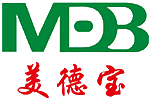-
-
Company Profile
-
Waterproof breathable membrane
Vapor barrier film
Barrier film
Reflective insulation film
TPO Waterproofing Membrane: A Sustainable Solution for Construction
Release time:
2025-05-04
TPO Waterproofing Membrane: A Sustainable Solution for Construction
Table of Contents
- 1. Introduction to TPO Waterproofing Membranes
- 2. What is TPO and How Does it Work?
- 3. Benefits of Using TPO Waterproofing Membranes
- 3.1. Sustainability and Environmental Impact
- 3.2. Durability and Longevity
- 3.3. Energy Efficiency and Cost Savings
- 4. Applications of TPO Waterproofing Membranes
- 5. Installation Techniques for TPO Membranes
- 6. Maintenance of TPO Waterproofing Systems
- 7. Common Questions About TPO Waterproofing Membranes
- 8. Conclusion
1. Introduction to TPO Waterproofing Membranes
In the realm of construction, ensuring that buildings are safeguarded against water intrusion is crucial. Traditional waterproofing methods often fall short in terms of sustainability and efficiency. **TPO waterproofing membranes** have emerged as a game-changing solution, offering a balance between performance and environmental responsibility. In this article, we delve into the properties, benefits, and applications of TPO membranes, providing a comprehensive understanding of why they are the future of sustainable construction.
2. What is TPO and How Does it Work?
TPO, or Thermoplastic Olefin, is a single-ply roofing membrane made from a blend of polypropylene and ethylene-propylene rubber. This combination results in a flexible, durable material that is ideal for a variety of roofing applications. TPO membranes are typically white or light-colored, which enhances their reflectivity and energy efficiency.
The primary function of TPO membranes is to provide a waterproof barrier that protects buildings from moisture damage. **The installation process** involves mechanically fastening or adhering the membrane to the substrate, ensuring that it remains securely in place even in adverse weather conditions. The seams are heat-welded to create a monolithic layer that prevents water penetration.
3. Benefits of Using TPO Waterproofing Membranes
TPO waterproofing membranes offer numerous advantages that set them apart from other materials. Here are some of the key benefits:
3.1. Sustainability and Environmental Impact
One of the standout features of TPO membranes is their environmentally friendly composition. Unlike traditional roofing materials, TPO is 100% recyclable, which significantly reduces waste in landfills. Additionally, TPO membranes are manufactured without harmful chemicals, making them safer for the environment.
Moreover, using TPO membranes contributes to **LEED certification** for green building projects, as they help reduce energy consumption and promote a sustainable construction approach.
3.2. Durability and Longevity
TPO membranes are designed to withstand extreme weather conditions, including high winds, heavy rainfall, and prolonged UV exposure. Their robust construction ensures that they resist punctures, tears, and impact damage, making them suitable for various climates. With proper installation and maintenance, TPO membranes can last 20 years or more, providing a long-term solution for waterproofing needs.
3.3. Energy Efficiency and Cost Savings
The reflective surface of TPO roofing membranes plays a crucial role in energy efficiency. By reflecting sunlight, TPO membranes help keep buildings cooler, reducing the need for artificial cooling systems. This characteristic leads to significant energy savings, particularly in warmer climates. In fact, studies indicate that TPO can reduce cooling costs by up to 30%, providing a compelling reason for builders to consider this material.
4. Applications of TPO Waterproofing Membranes
TPO waterproofing membranes are versatile and can be applied in various scenarios:
- **Commercial Roofing:** TPO is widely used in commercial buildings due to its durability and energy efficiency.
- **Residential Roofing:** Homeowners are increasingly opting for TPO membranes for their eco-friendliness and long lifespan.
- **Flat and Low-Slope Roofs:** The flexibility of TPO membranes makes them ideal for flat and low-slope applications, where effective drainage is critical.
- **Green Roofs:** TPO membranes can serve as an excellent base layer for green roofs, helping to manage water while supporting vegetation.
5. Installation Techniques for TPO Membranes
The installation of TPO waterproofing membranes requires careful planning and execution to ensure optimal performance. Here’s a detailed breakdown of the installation process:
1. **Preparation:** The roof surface must be clean and dry before installation. Any debris or loose material should be removed to create a smooth substrate.
2. **Mechanically Fastened Systems:** In this method, TPO membranes are secured to the roof deck using metal plates and screws, ensuring a tight fit.
3. **Fully Adhered Systems:** TPO can also be fully adhered using adhesive, providing a seamless application that enhances waterproofing capabilities.
4. **Heat-Welded Seams:** To achieve a watertight seal, seams between TPO sheets are heat-welded using a specialized welding tool. This creates a continuous membrane that eliminates the risk of water penetration.
5. **Inspection and Maintenance:** After installation, a thorough inspection should be conducted to ensure all seams and edges are secure.
6. Maintenance of TPO Waterproofing Systems
While TPO membranes require minimal maintenance, regular inspections are vital to ensure long-term performance. Here are some maintenance tips:
- **Routine Inspections:** Conduct visual inspections at least twice a year and after severe weather events to identify any potential issues.
- **Cleaning:** Remove debris such as leaves, dirt, and moss to prevent blockages and promote proper drainage.
- **Repairing Damage:** Promptly address any punctures or tears in the membrane to prevent water infiltration. TPO repair kits are readily available for quick fixes.
7. Common Questions About TPO Waterproofing Membranes
**Q1: How long do TPO waterproofing membranes last?**
A1: With proper installation and maintenance, TPO membranes can last up to 20 years or more.
**Q2: Are TPO membranes environmentally friendly?**
A2: Yes, TPO membranes are 100% recyclable and manufactured without harmful chemicals, making them a sustainable choice.
**Q3: Can TPO membranes be installed on residential roofs?**
A3: Absolutely! Many homeowners are choosing TPO membranes for their durability and energy efficiency.
**Q4: How do TPO membranes compare to other waterproofing materials?**
A4: TPO membranes outperform many traditional materials in terms of durability, energy efficiency, and environmental impact.
**Q5: What is the cost of installing TPO waterproofing membranes?**
A5: The cost can vary depending on the size of the roof and installation method, but TPO is generally considered cost-effective due to its longevity and energy savings.
8. Conclusion
TPO waterproofing membranes represent a significant advancement in sustainable construction materials. Their combination of durability, energy efficiency, and environmental benefits makes them an excellent choice for both commercial and residential applications. By opting for TPO membranes, builders and homeowners can ensure long-lasting protection against water intrusion while also contributing positively to the environment. As the construction industry continues to evolve, TPO membranes are poised to play a crucial role in promoting sustainable building practices and enhancing overall building performance.Previous article
recommend News
China Pvc Waterproofing Membrane
2025-04-27
Sell one
Kelly Ho
15133606577
kelly.ho@tjmeidebao.com
Sales two
All- All
- Product Management
- News
- Introduction
- Enterprise outlets
- FAQ
- Enterprise Video
- Enterprise Atlas
Sweep the attention to us

COOKIES
Our website uses cookies and similar technologies to personalize the advertising shown to you and to help you get the best experience on our website. For more information, see our Privacy & Cookie Policy
COOKIES
Our website uses cookies and similar technologies to personalize the advertising shown to you and to help you get the best experience on our website. For more information, see our Privacy & Cookie Policy
These cookies are necessary for basic functions such as payment. Standard cookies cannot be turned off and do not store any of your information.
These cookies collect information, such as how many people are using our site or which pages are popular, to help us improve the customer experience. Turning these cookies off will mean we can't collect information to improve your experience.
These cookies enable the website to provide enhanced functionality and personalization. They may be set by us or by third-party providers whose services we have added to our pages. If you do not allow these cookies, some or all of these services may not function properly.
These cookies help us understand what you are interested in so that we can show you relevant advertising on other websites. Turning these cookies off will mean we are unable to show you any personalized advertising.
Copyright: Tianjin Medabao Technology Co., Ltd.
Business License
-


